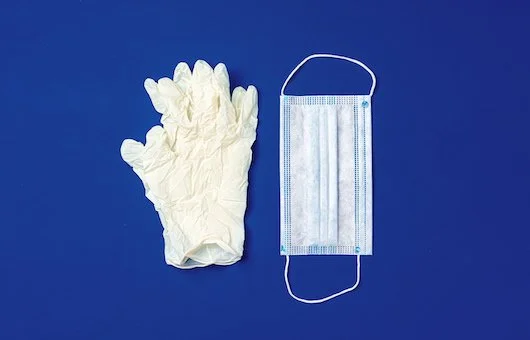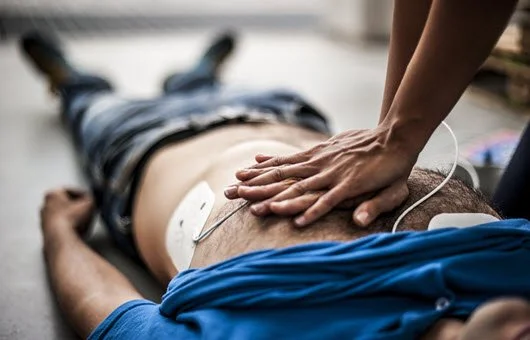First Aid - Heart Attack
Languages: English
Media Editing: The video module(s) in this subject are editable under our Content Studio offering unless otherwise indicated. For more information about Content Studio, contact your CSM.
Description: This subject focuses on teaching learners what a heart attack is, what causes them, what increases the risk of heart attack, and how to help someone who is experiencing one. Content also includes some information to help learners distinguish between heart attacks and strokes. Content is intended to supplement formal training conducted by recognized providers such as the American Red Cross, the American Heart Association and others. It is not intended to refresh existing training offered by these providers.
Languages: English
Media Editing: The video module(s) in this subject are editable under our Content Studio offering unless otherwise indicated. For more information about Content Studio, contact your CSM.
Description: This subject focuses on teaching learners what a heart attack is, what causes them, what increases the risk of heart attack, and how to help someone who is experiencing one. Content also includes some information to help learners distinguish between heart attacks and strokes. Content is intended to supplement formal training conducted by recognized providers such as the American Red Cross, the American Heart Association and others. It is not intended to refresh existing training offered by these providers.
Languages: English
Media Editing: The video module(s) in this subject are editable under our Content Studio offering unless otherwise indicated. For more information about Content Studio, contact your CSM.
Description: This subject focuses on teaching learners what a heart attack is, what causes them, what increases the risk of heart attack, and how to help someone who is experiencing one. Content also includes some information to help learners distinguish between heart attacks and strokes. Content is intended to supplement formal training conducted by recognized providers such as the American Red Cross, the American Heart Association and others. It is not intended to refresh existing training offered by these providers.
Topics
Signs And Causes Of Heart Attacks
-
Learners are taught what a heart attack is, how they happen, and some common signs that they can use to help determine whether or not someone is having a heart attack. Learners are also taught some key differentiators between heart attacks and strokes. Finally, this topic teaches some valuable and lesser-known tips about how women experience different symptoms of heart attack than men. This topic includes a video to explain the main concepts.
-
Questions (level 1, 2, 3)
Video module
-
This topic is currently available in English.
-
A heart attack occurs when part of the heart muscle dies because it has been deprived of oxygen.
The most common signs of a heart attack include chest pain and pain/discomfort in the shoulder, neck, and arm area.
Additional signs of a heart attack include shortness of breath, light-headedness, fainting, and nausea/vomiting.
Women may experience additional symptoms when having a heart attack, such as abdominal pain (feeling like heartburn or indigestion), dizziness, moderate to severe fatigue, and clammy skin.
There are certain factors that may cause someone to be at an increased risk of a heart attack, such as smoking, having an inactive lifestyle, and old age.
Certain medical conditions, such as angina, diabetes, high blood pressure, high cholesterol, or atrial fibrillation (abnormal heart rhythm) can make someone more susceptible to suffering a heart attack.
Heart attacks and stroke are similar in that they both usually have a sudden onset of signs and symptoms and are caused by disruptions in the flow of oxygen-rich blood.
Heart attacks and strokes are similar in that they both can produce debilitating symptoms and health problems and should be treated immediately.
Heart attacks and strokes are different in that they originate in different areas of the body – a heart attack happens when there is oxygen deprivation to the heart; strokes happen when there is oxygen deprivation to the brain.
Treating Heart Attacks
-
This topic offers some life-saving tips and practices for helping someone who might be experiencing a heart attack. Learners are taught how to get the victim into a comfortable position, how to help slow or reduce the size of the blood clot, how to monitor the victim while waiting for emergency medical services, and more.
-
Questions (level 1, 2, 3)
-
This topic is currently available in English.
-
When someone is having a heart attack, help them into a comfortable position (such as sitting with their head and shoulders supported and knees bent) as this will ease the strain on their heart.
When someone is having a heart attack, if possible, give them either two baby aspirin or one regular strength aspirin and have them chew it slowly. This can slow clotting and decrease the size of the blood clot that is forming.
When someone with angina is suffering from a possible heart attack, encourage them to take their angina medication to ease their symptoms.
If you suspect someone is having a heart attack, call Emergency Medical Services (EMS) immediately to reduce the risk of death or disability.
When waiting for Emergency Medical Services to arrive, monitor the victim's responsiveness, and be prepared to administer rescue breathing if the victim loses consciousness but has a pulse.
When waiting for Emergency Medical Services to arrive, monitor the victim's responsiveness and be prepared to administer CPR (if you are qualified to do so) if the victim loses consciousness and does not have a pulse.
When waiting for Emergency Medical Services to arrive, stay calm, and reassure the victim that help is on the way. Help them avoid putting additional strain on their heart.
When waiting for Emergency Medical Services to arrive, loosen any tight clothing (e.g. by unbuttoning or unzipping) to make it easier for the victim to breathe.
Preview of topic image for “Treating Heart Attacks” as this topic is questions only.







